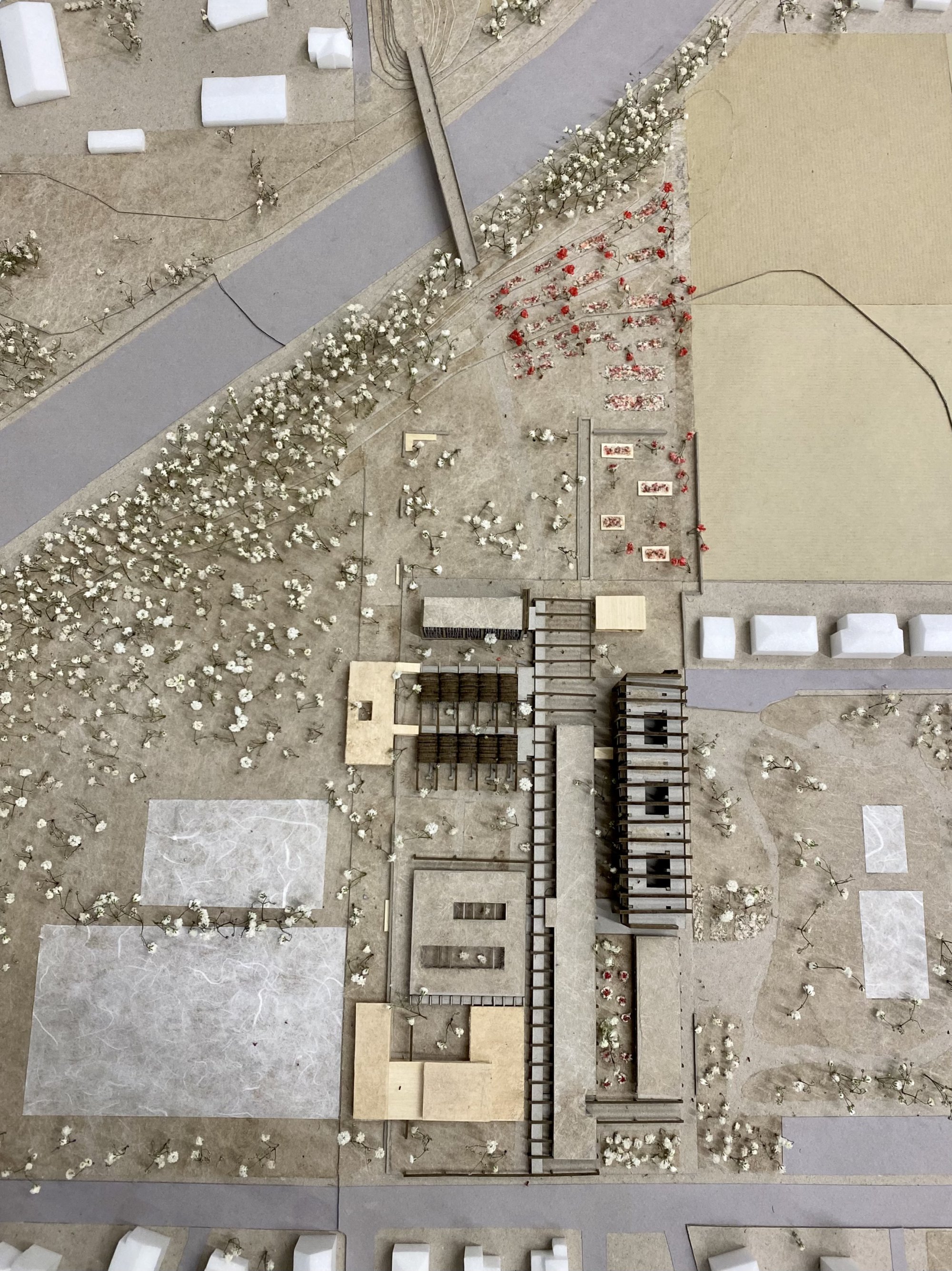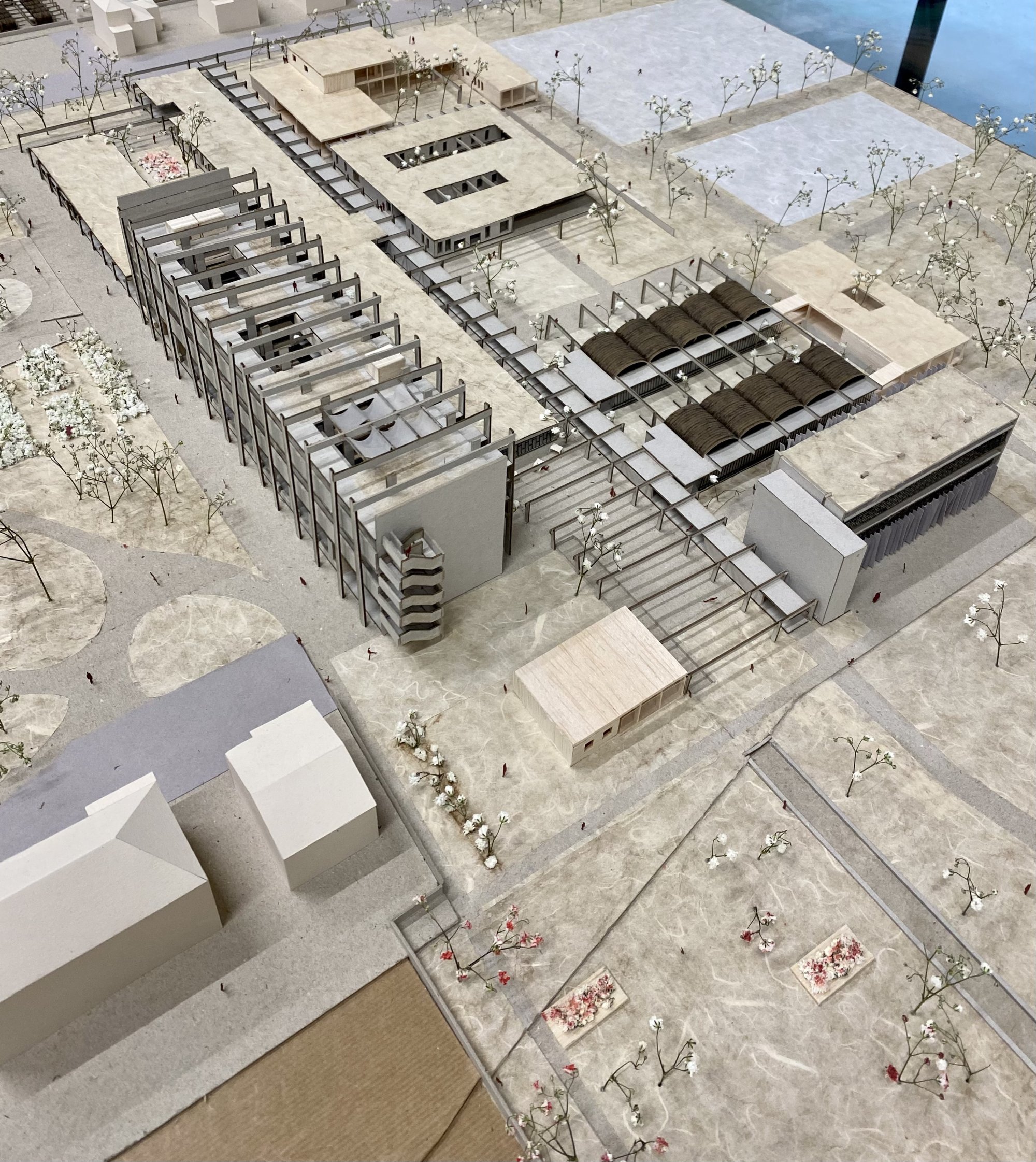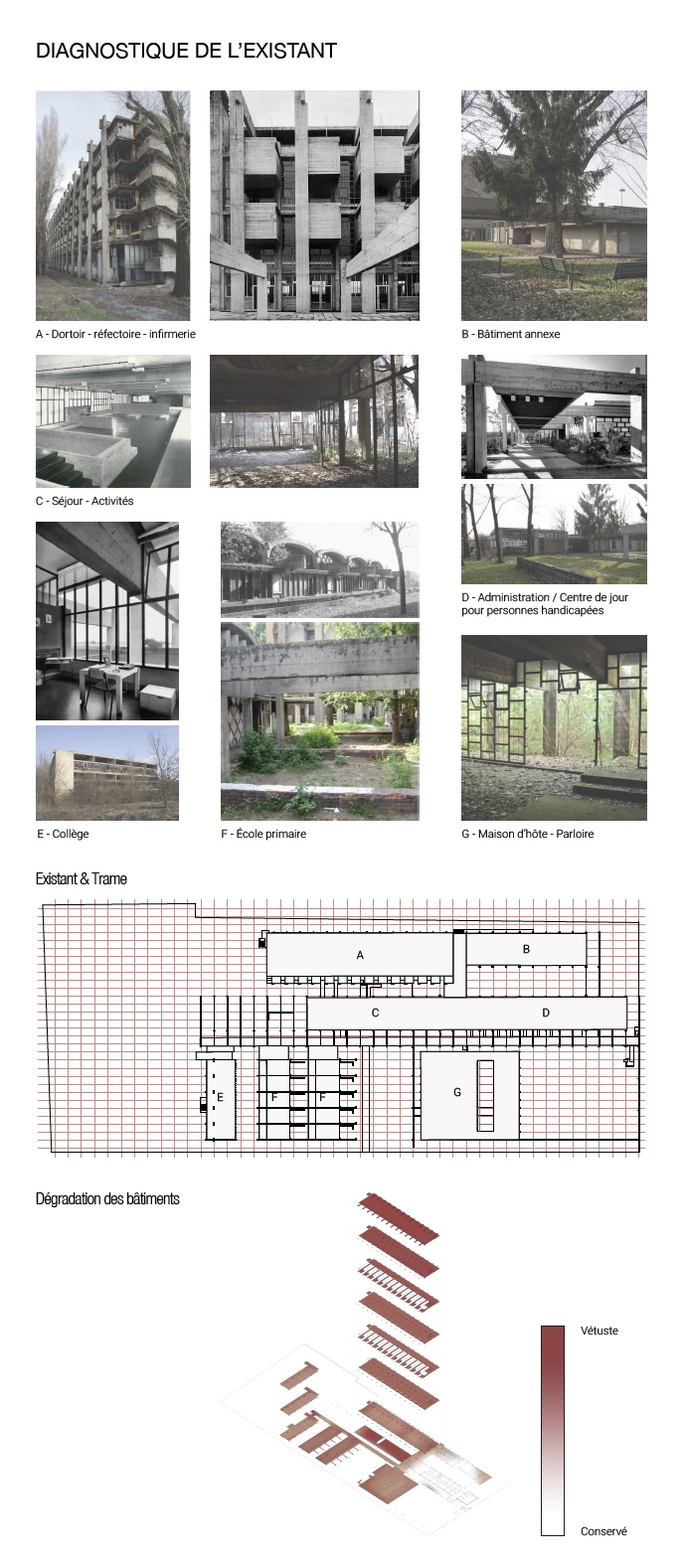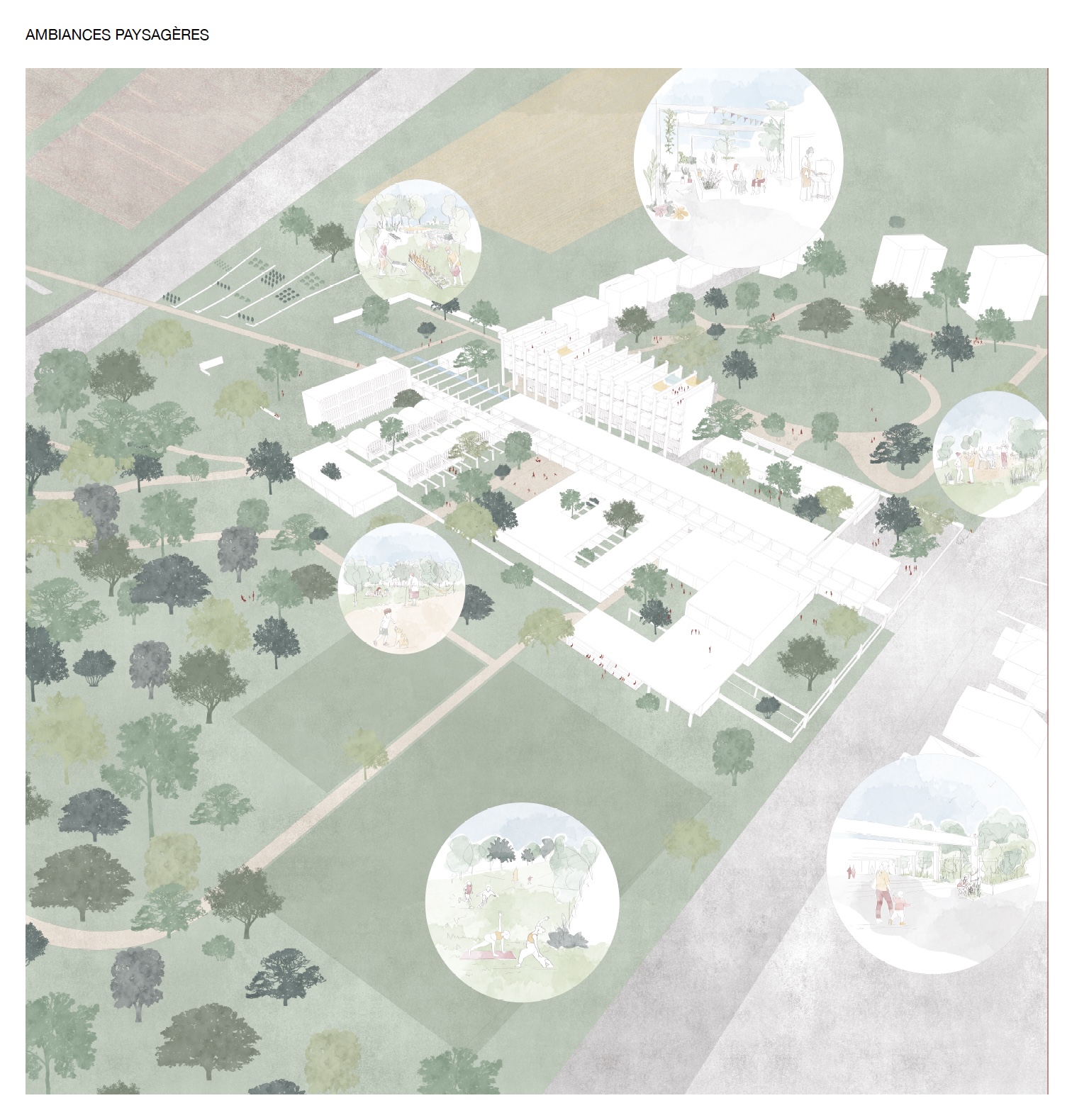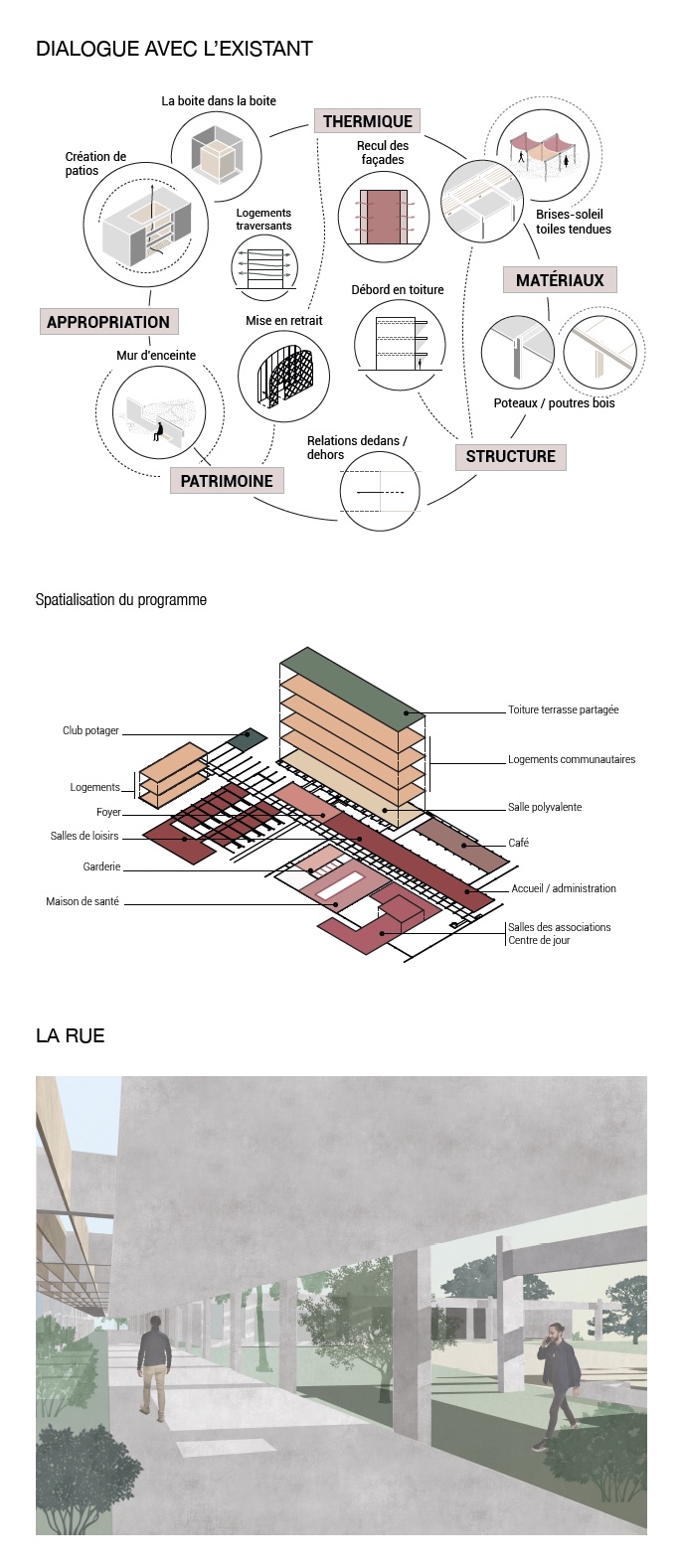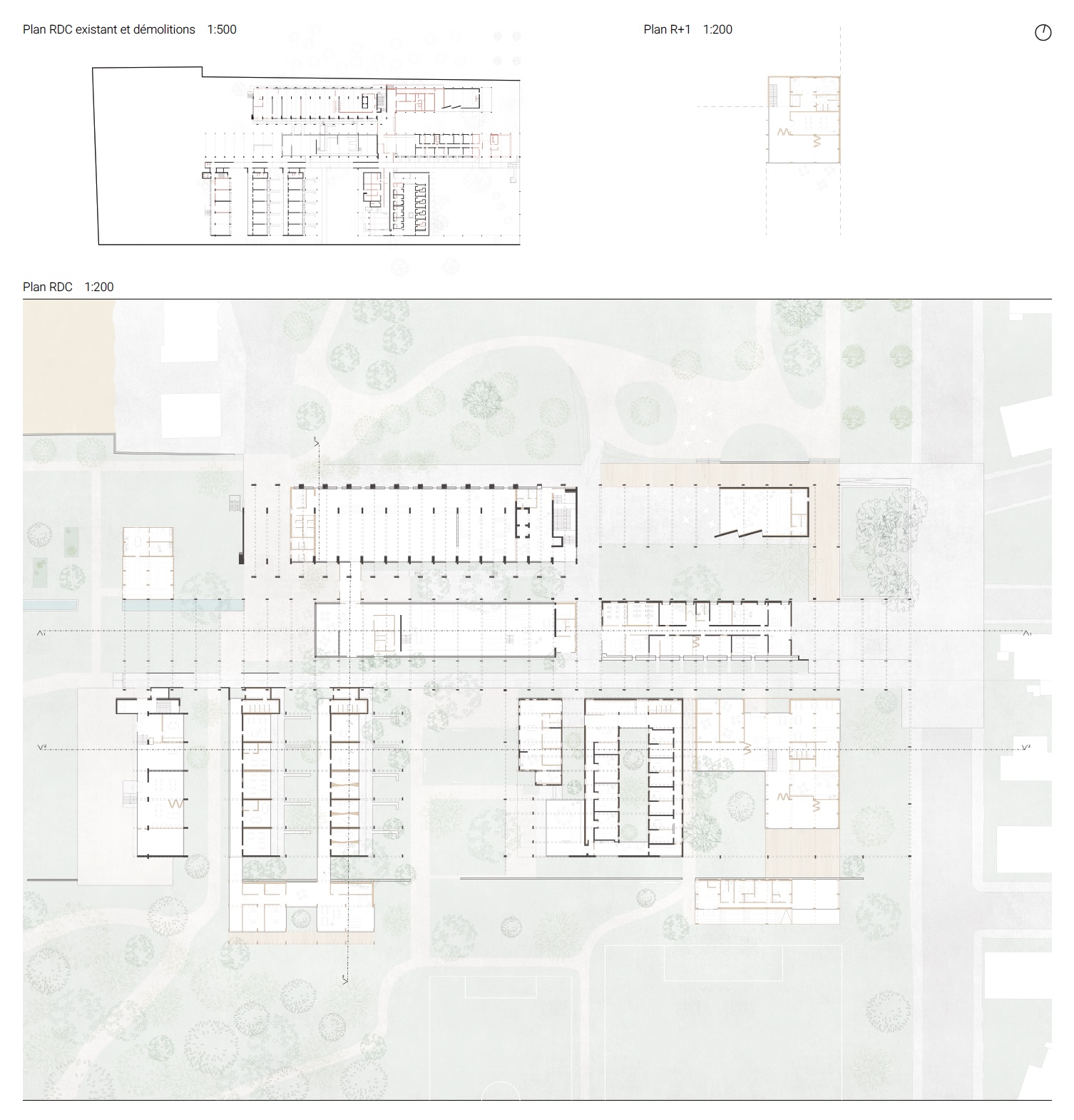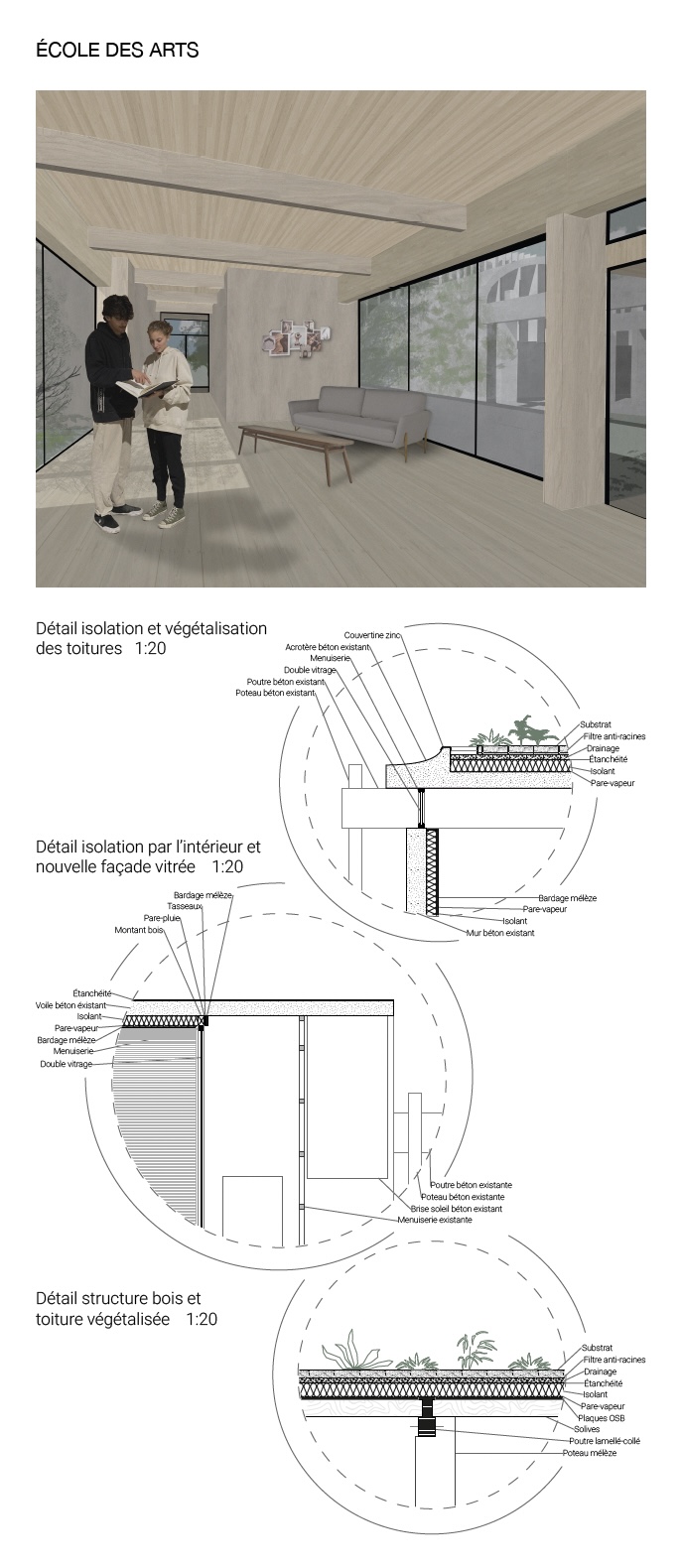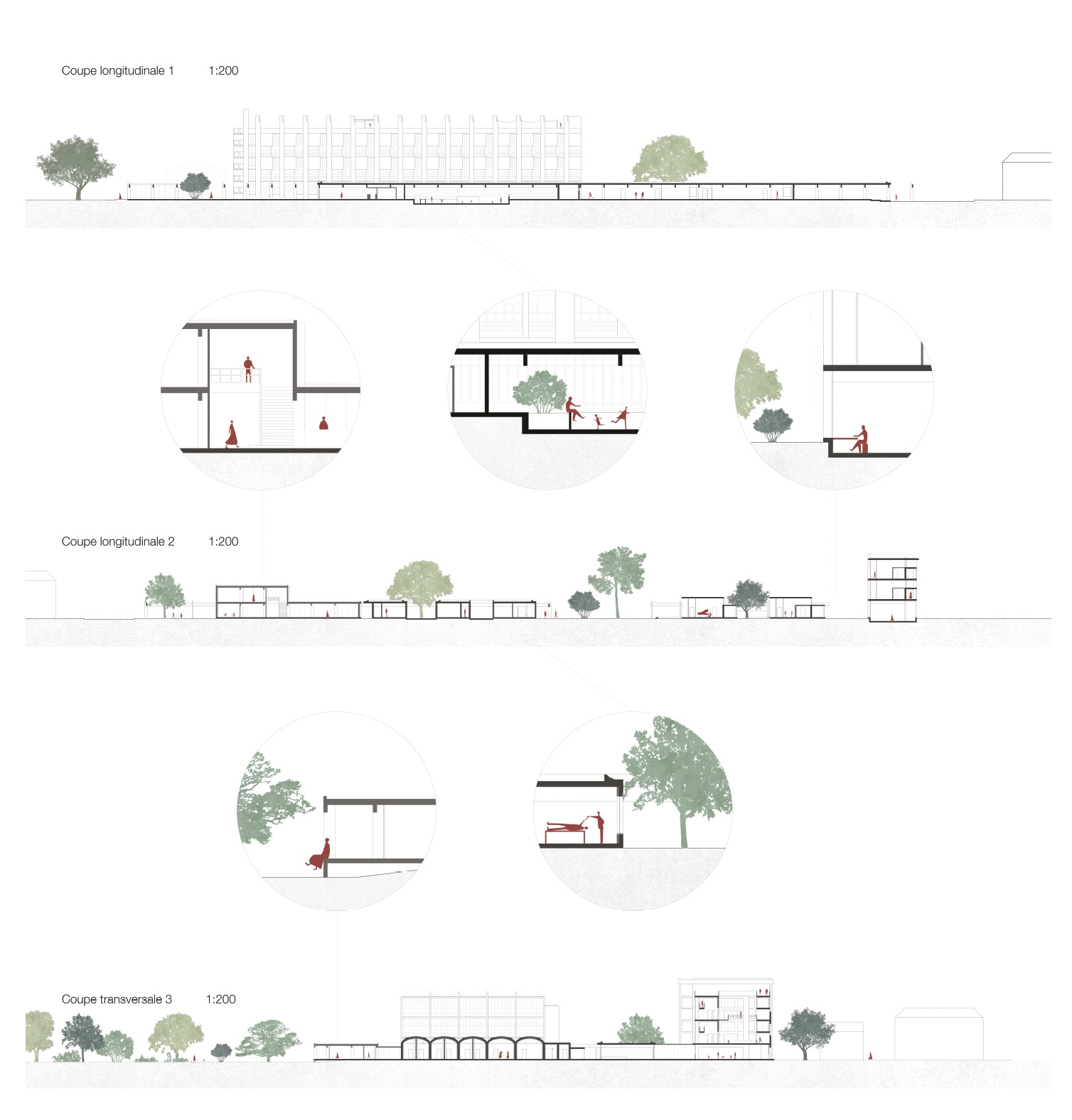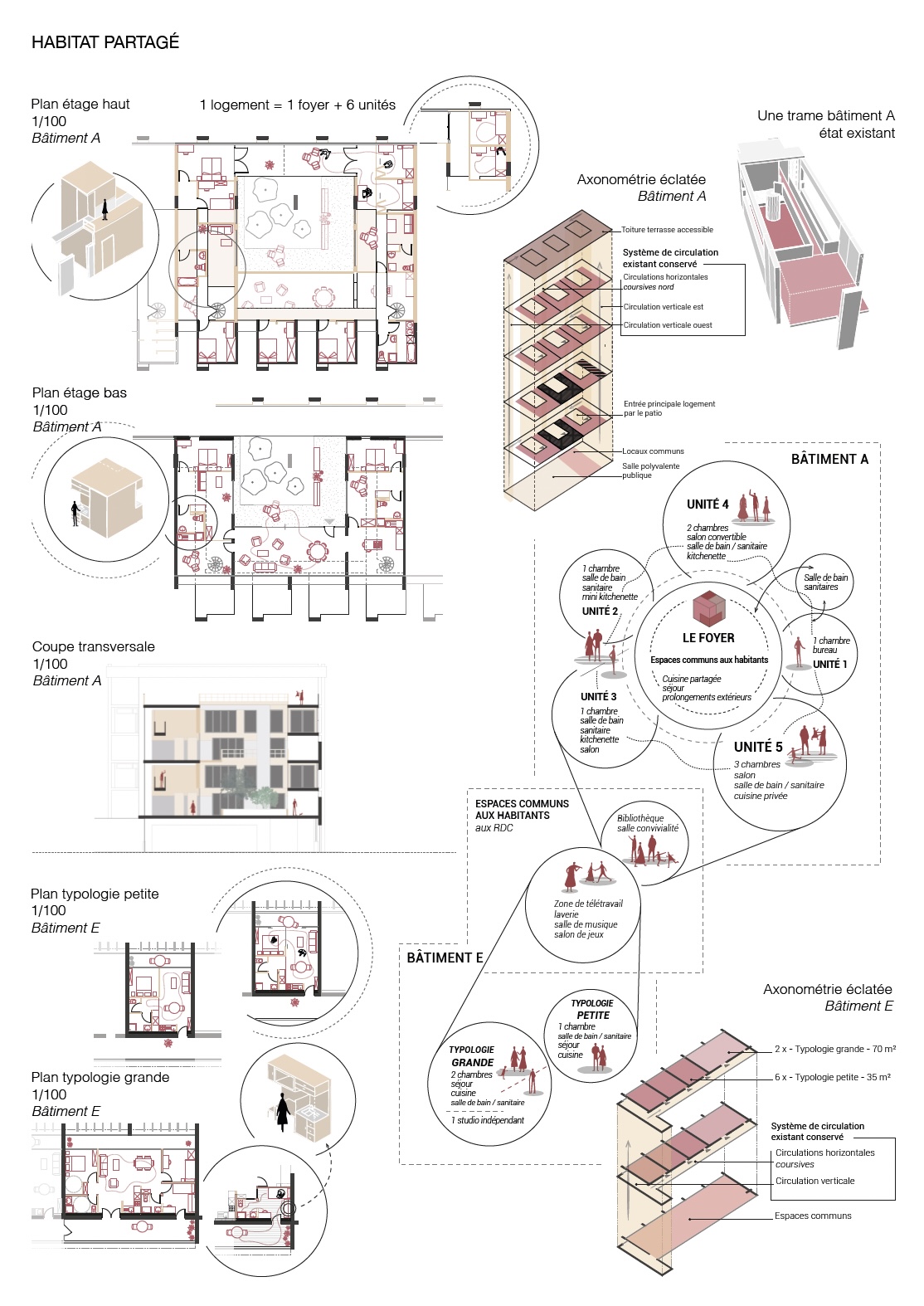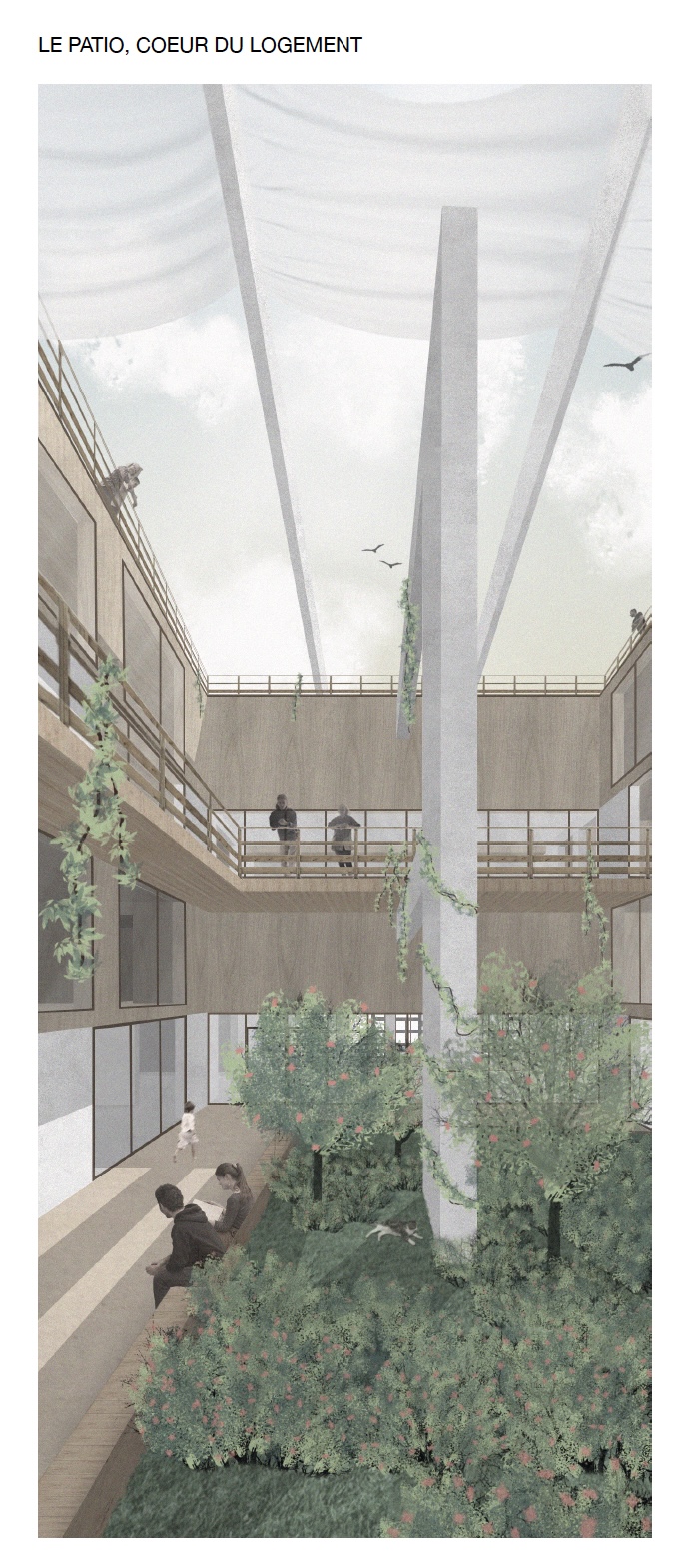Léa Stephan
Les Marchiondi, requalification d’une ancienne maison de correction brutaliste
A l’ouest de Milan sommeille l’ancien Institut Marchiondi Spagliardi. D’apparence imposante et sévère au premier abord, ces bâtiments de béton brut dissimulés par une végétation abondante gardent la mémoire de l’ancienne maison de correction pour garçons difficiles de la métropole milanaise. Une fois passé le mur d’enceinte, un ensemble de pavillons s’offre à nous, dévoilant la richesse de ce chef-d’œuvre du brutalisme italien, construit par Vittoriano Viganò en 1957. Abandonné depuis 1975, le site est en proie aux dégradations et aux sévices du temps. Si la flore sauvage mêlée aux bâtiments tombant en ruine confère au lieu un charme fascinant, les qualités architecturales de cet ensemble si particulier se doivent d’être sauvegardées. Composé de pavillons largement ouverts sur l’extérieur et organisés le long d’une rue centrale, l’institut se caractérise par son béton brut et ses structures rythmant l’espace. Classé monument historique, la question de son avenir se pose depuis les années 80, sans qu’aucune proposition n’aboutisse pour des raisons politique et économique. Si l’état de dégradation avancée de l’institut rend la tâche compliquée, l’emplacement stratégique des bâtiments est un atout considérable. En effet, ce quartier défavorisé de Milan va bénéficier d’une extension de la ligne de métro 1 qui vient offrir de nouvelles perspectives de développement. Placé au bout de la passerelle reliant les différents quartiers entre eux, ce site représente une opportunité de taille pour ce territoire. La position en lisière, entre champs et tissu urbain dense, lui donne un rôle clé quant au traitement de cette limite paysagère.
L’ambition de ce projet est d’imaginer l’avenir des Marchiondi en proposant une stratégie alliant la préservation de l’existant aux besoins d’une nouvelle programmation, tout en tenant compte de la réalité économique actuelle. Pour répondre aux besoins du quartier, je propose de transformer les Marchiondi en centre socio-culturel. L’institution redeviendrait alors un vecteur d’inclusion comme par le passé, et le support d’une communauté solidaire. Afin de faire revivre ce site, l’ouverture et la reconnexion au contexte proche est nécessaire. Cela passe par la déviation de la rue voisine afin de la faire passer par le site, et la création d’une entité paysagère englobant les différents types de natures avoisinants. Cette nature vient jouer le rôle de fil conducteur en s’insinuant entre les différents pavillons composant l’ensemble. Le projet propose de compléter le système de l’ensemble existant en le prolongeant au-delà des limites imposées à l’époque par le mur d’enceinte. De nouveaux pavillons viendront ainsi se greffer à l’existant pour supporter les nouvelles fonctionnalités du site. Ces extensions instaurent un dialogue avec le "déjà là" dans le respect de la grammaire existante tout en se forgeant une identité visuelle propre qui se retrouve dans les interventions sur les pavillons d’époque.




